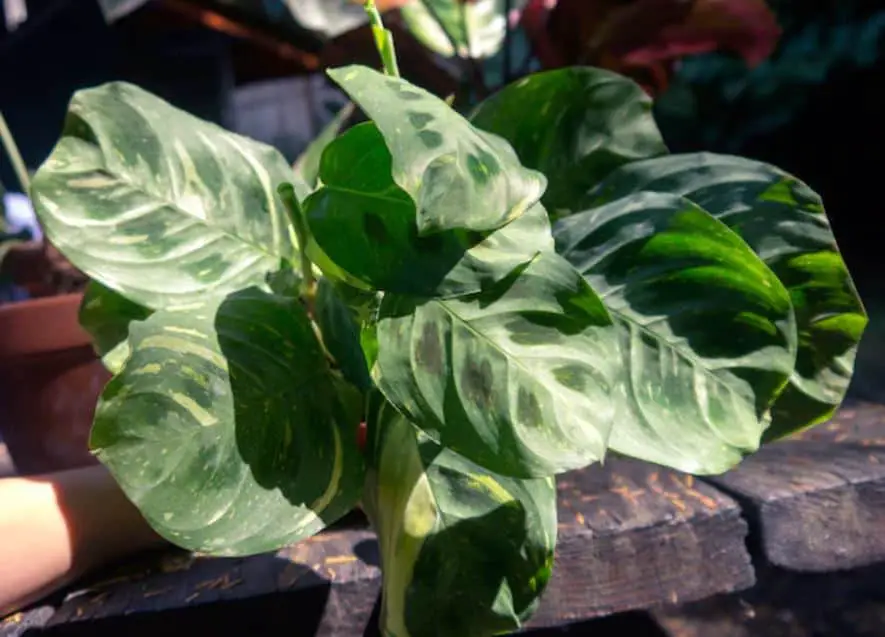The prayer plant is a typical indoor plant cultivated for its gorgeous, multicolored leaves. The tropical Americas, notably South America, are home to the prayer plant species. It grows in the rainforest understory and is a member of the Marantaceae family. There are between 40 and 50 different species or varieties of prayer-plants. Of the numerous Maranta variants, only two prayer plant kinds comprise most of the nursery stock utilized as indoor plants or for other decorative purposes.

About Maranta Varieties
Most Maranta species have comparable leaf sets on underground rhizomes or tubers. The leaves of Maranta may be thin or wide, with pinnate veins that run parallel to the midrib, depending on the variety. Bracts may surround tiny or spiky blooms.
Maranta leuconeura, sometimes known as the peacock plant, is the species of prayer plant cultivated most frequently. This species, often cultivated as a houseplant, lacks tubers, has a small flower, and a low-growing vining habit that allows it to be grown as a hanging plant. These praying plants are cultivated for their eye-catching, decorative leaves.
Types of Prayer Plant
Two cultivars of Maranta leuconeura stand out as being the most widely cultivated: “Erythroneura” and “Kerchoviana.”
Erythroneura, often known as the red nerve plant, has feathery leaves with a bright greenish-yellow center and greenish-black foliage with striking red midrib and lateral veins.
Kerochoviana is a spreading herbaceous plant with a vining habit, popularly known as rabbit’s foot. Patchy brown splotches that eventually become dark green are visible on the velvety, variegated top surface of the foliage. Prayer plants of this kind are grown as hanging plants. Small white blossoms might appear, although this is more typical when the plant is in its natural habitat.
Maranta bicolor, “Kerchoviana Minima,” and Silver Feather or Black Leuconeura are some of the most uncommon types of prayer-plants.
The Kerchoviana Minima is rare. It does not have tuberous roots but has inflated stems at the nodes, a common feature of other Maranta types. The underside of the leaves is purple, and they are dark green with light green splotches between the midrib and border. Its foliage resembles a green Maranta, except its surface area is a third smaller, and its internodes are longer.
On top of a greenish-black backdrop, Silver Feather Maranta (Black Leuconeura) has lateral veins that radiate in a light greyish-blue-green color.
The “Tricolour” type of prayer plant is another lovely one. As the name suggests, this Maranta cultivar has gorgeous leaves with three distinct colors. The leaves are a rich shade of green, with variegated regions of cream or yellow and scarlet-colored veins.

